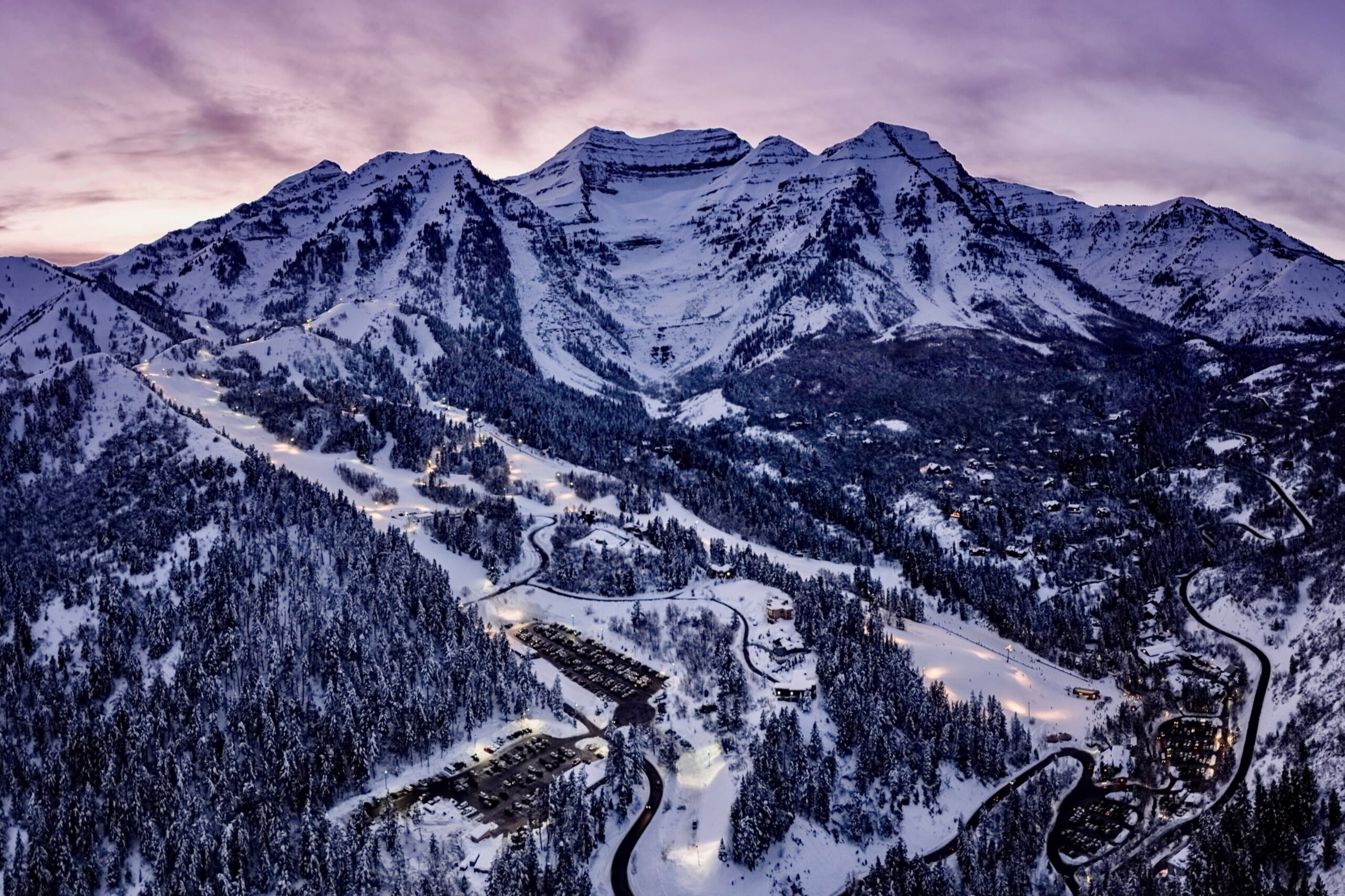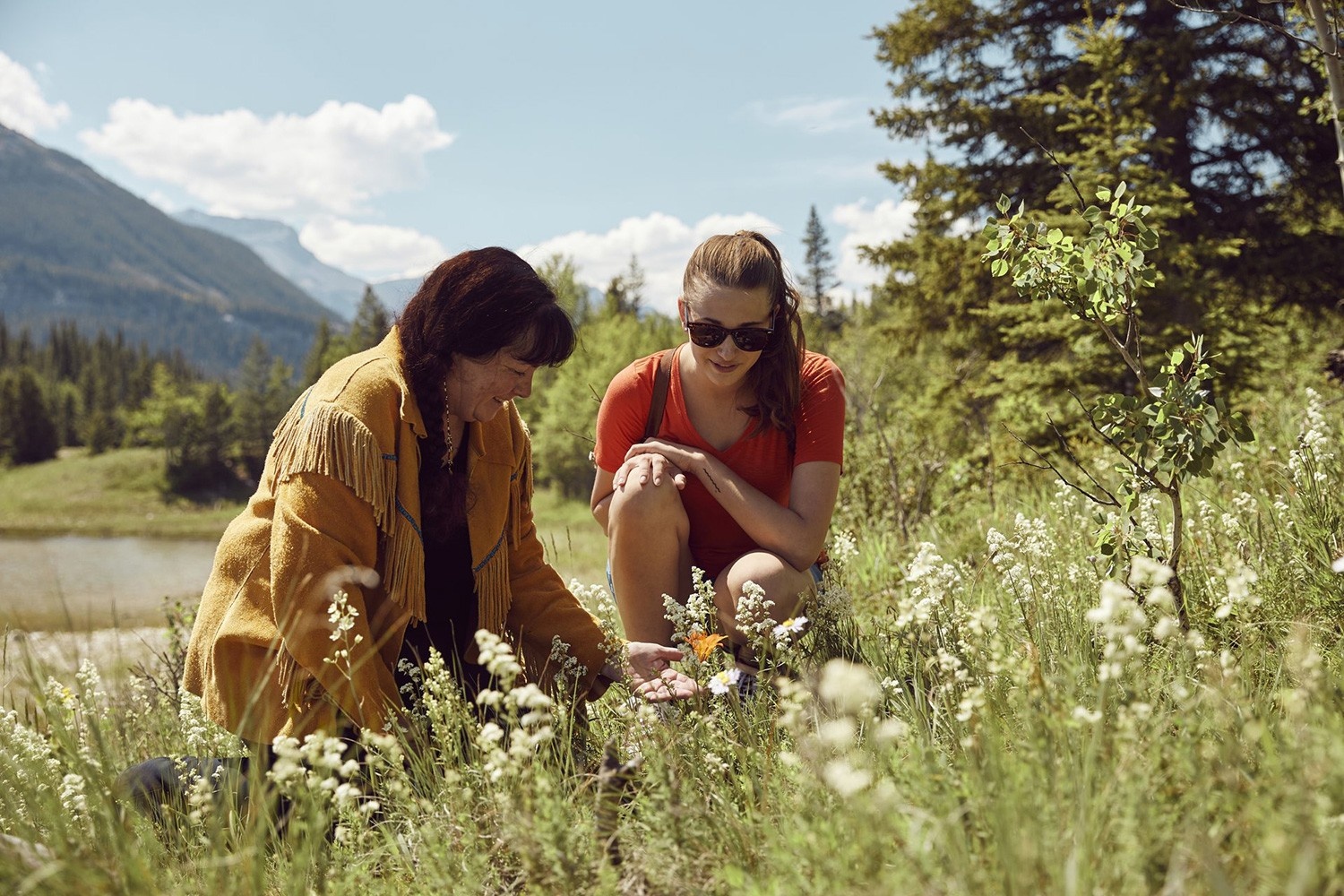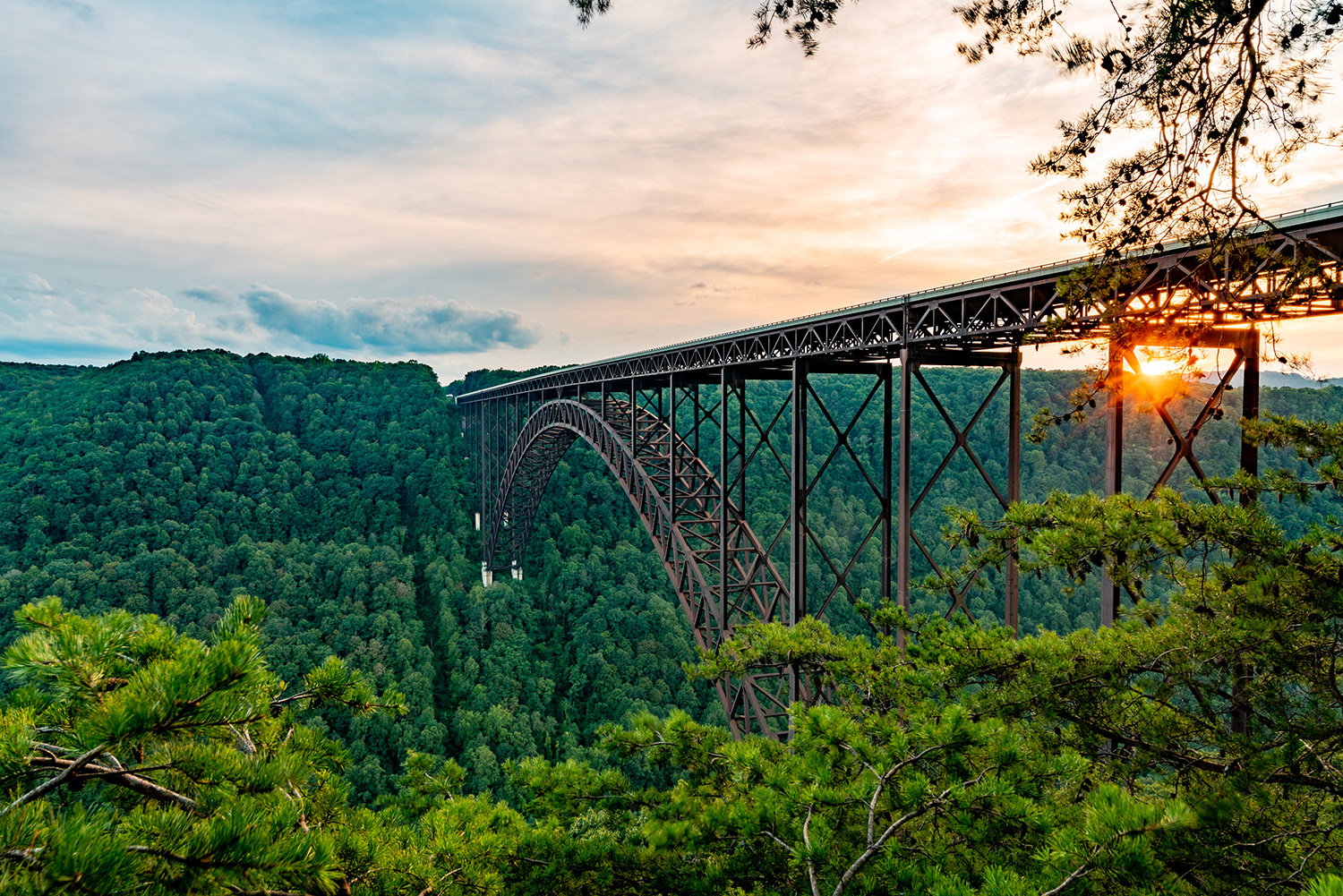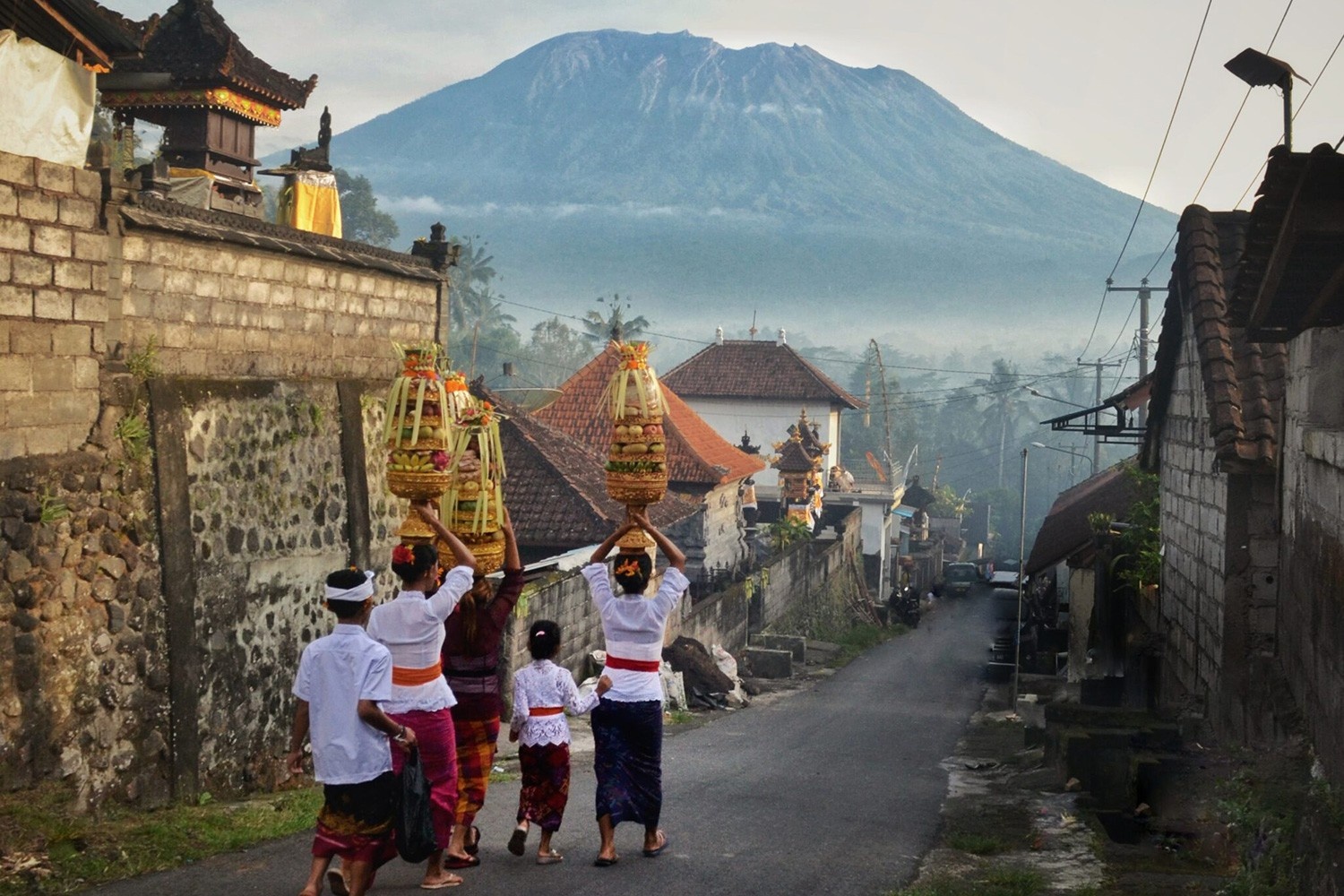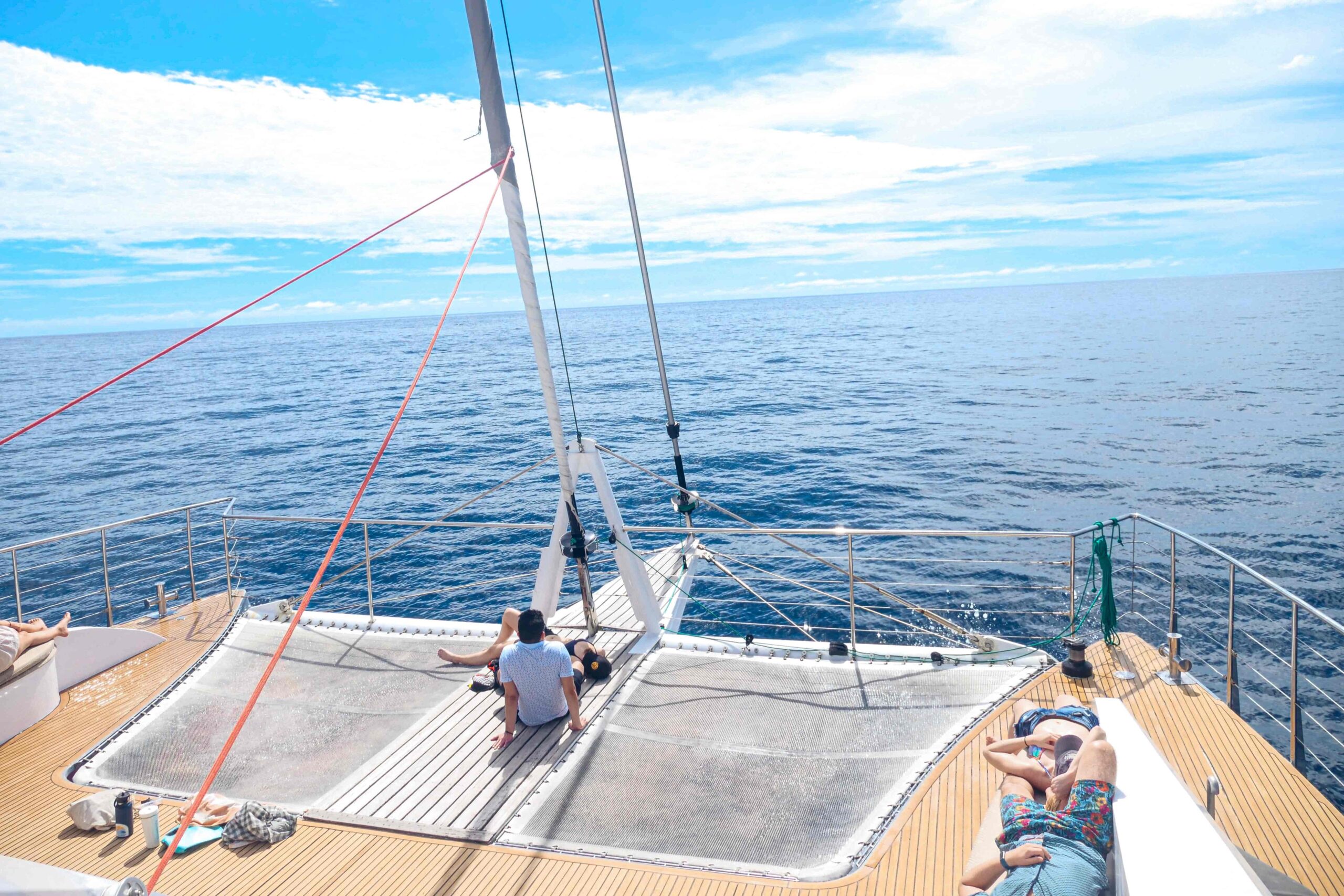NORTH STARS:
Wildlife Ecosystems
Community Support
Heritage Value
“Robert Redford’s vision to ‘develop only a little and preserve a great deal,’ is a guiding principle we proudly uphold at Sundance today.”
Carving easy turns on a last run of the day down from the mountaintop Bearclaw Cabin, kicking up diamond dust snow sparkles in the late afternoon sunlight, it’s easy to see why Robert Redford first fell in love with the pine-tree studded canyon in Provo, Utah, that would become Sundance Mountain Resort. Founded by the actor and philanthropist with a vision to create “not just a place but a feeling,” Sundance might be synonymous with its namesake film festival but is a paradigm of sustainable, small-scale growth done right. When most resorts strived to develop, Redford chose to conserve and preserve its natural setting, with many of Sundance’s green policies dating back to its original purchase in 1969.
Nestled at the base of majestic Mount Timpanogos, Utah’s second highest peak in the Wasatch Mountains, the resort’s offerings extend far beyond skiing. Its hideaway setting and rugged- meets-western luxe mountain homes and timber cabins, onsen-style experience, The Springs hot tubs and relaxation area, iconic Tree Room restaurant (built around a real tree whose rustic fine dining menu standout is its peppered steak) and storied Owl Bar (a restored 1890’s wild west saloon once frequented by Butch Cassidy) all helped secure its One MICHELIN Key designation. But it balances all this with environmental stewardship and sustainable operations.
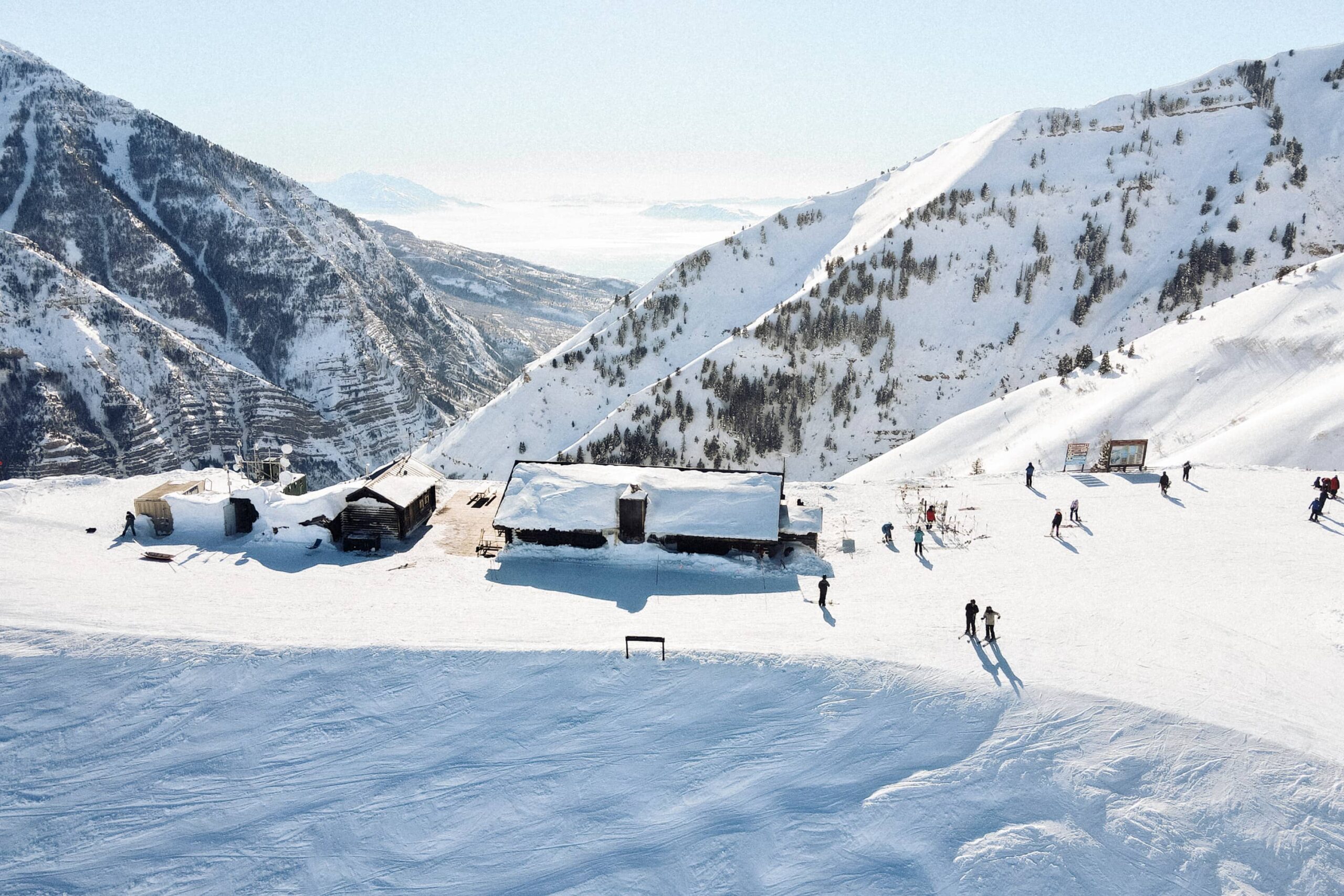
Sundance features 500 uncrowded skiable acres. Courtesy Sundance Mountain Resort
Today, of its 5,000 acres of protected private land, only 450 are still skiable, and none of its tucked-away buildings rise above the treeline. 2,600 acres are preserved through a conservation easement, and the broader 5,000-acre Sundance community is bordered by 245,000 acres of U.S. Forest Service land, including the Mt. Timpanogos Wilderness, which, alongside Sundance, also provides habitat for a diverse range of wildlife – from elk, mule deer, and black bears, to mountain lions and bobcats. Bird life is abundant too, with the forests home to eagles, hawks and owls. Celebrating nature and the arts, recycled wine bottles are turned into glassware and ornaments at an onsite art studio. Each winter “Night Owling” snowshoe tours held in partnership with local nonprofit the Great Basin Wildlife Rescue educate guests about wild owl species. The resort also sets aside one percent of all resort revenue for community engagement and education programs. Even the water used comes entirely from local mountain-fed springs.
Green building policies guide all new construction and remodeling projects, too, including the forthcoming Inn at Sundance Resort. This new, 63-room hotel at the resort’s base has been thoughtfully designed to preserve views of “Mt. Timp” per Redford’s wishes that no building should ever stand higher than the tallest surrounding tree.
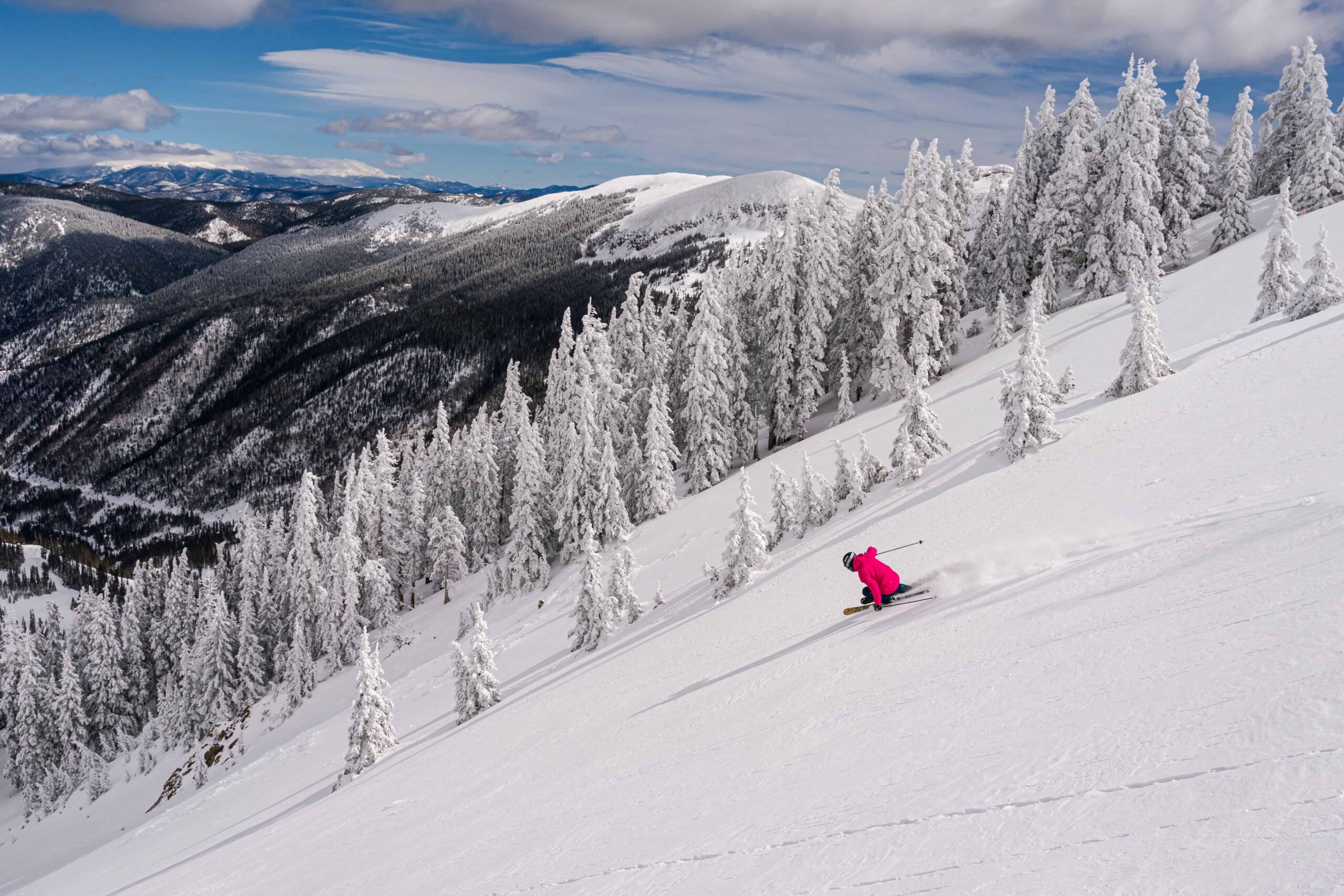
Taos is renowned for its steep runs and light, dry powder. Courtesy of Liam Doran.
Despite being sold in 2020, the new ownership group is preserving its founders’ legacy. “Stewardship and conservation are at the core of Sundance Resort and are woven into the ethos of nearly everything we do,” says VP of Marketing Nick Como. “With over 70% of our land preserved through permanent easements, we honor Robert Redford’s vision to ‘develop only a little and preserve a great deal,’ a guiding principle we proudly uphold today.”
Leaving Tracks for Others to Follow
Redford’s forward-thinking commitment to sustainability may have set an example for environmentally conscious tourism nearly four decades before “going green” became a global movement, but Aspen Snowmass in neighboring Colorado is another notable leader. Home to some of the most dramatic peaks in the Rockies, including eight of the state’s 58 famous “fourteeners” (any peak measuring 14,000 feet above sea level), with its Michelin-level restaurants, art galleries and haute boutiques, the Aspen area might be a see-and-be-seen winter playground for Hollywood A-listers, but the glamorous resort town (and adjacent ski areas, including Snowmass Village) has as much substance as style when it comes to responsible mountain tourism.
Its employee-founded and led nonprofit, the Environment Foundation, was established in 1997 and has since granted over $4 million to climate action, land conservation, and sustainability initiatives, including policies that protect wildlife and natural resources. Forging change at the federal level is also a key pillar. “At Aspen Snowmass, we take the long view because climate change is an existential threat not only to the ski industry and our way of life but to life itself,” shares an Aspen One spokesperson, whose leaders have lobbied for climate action in Washington D.C. since 2004 and helped secure support for the largest climate bill in U.S. history.
Signed in 2022, the Inflation Reduction Act saw a $370 billion investment in clean energy, electric vehicles, and emissions reduction that help ski towns combat rising temperatures and preserve winter tourism. From the use of solar energy (Aspen was the first resort to install a panel array more than two decades ago) to low-impact dining at businesses like The Little Nell hotel at the base of Ajax Mountain, which spends over $200,000 on local produce annually thanks to a partnership with regional food distributor Farm Runners, green operations here are impressive and wide-ranging.
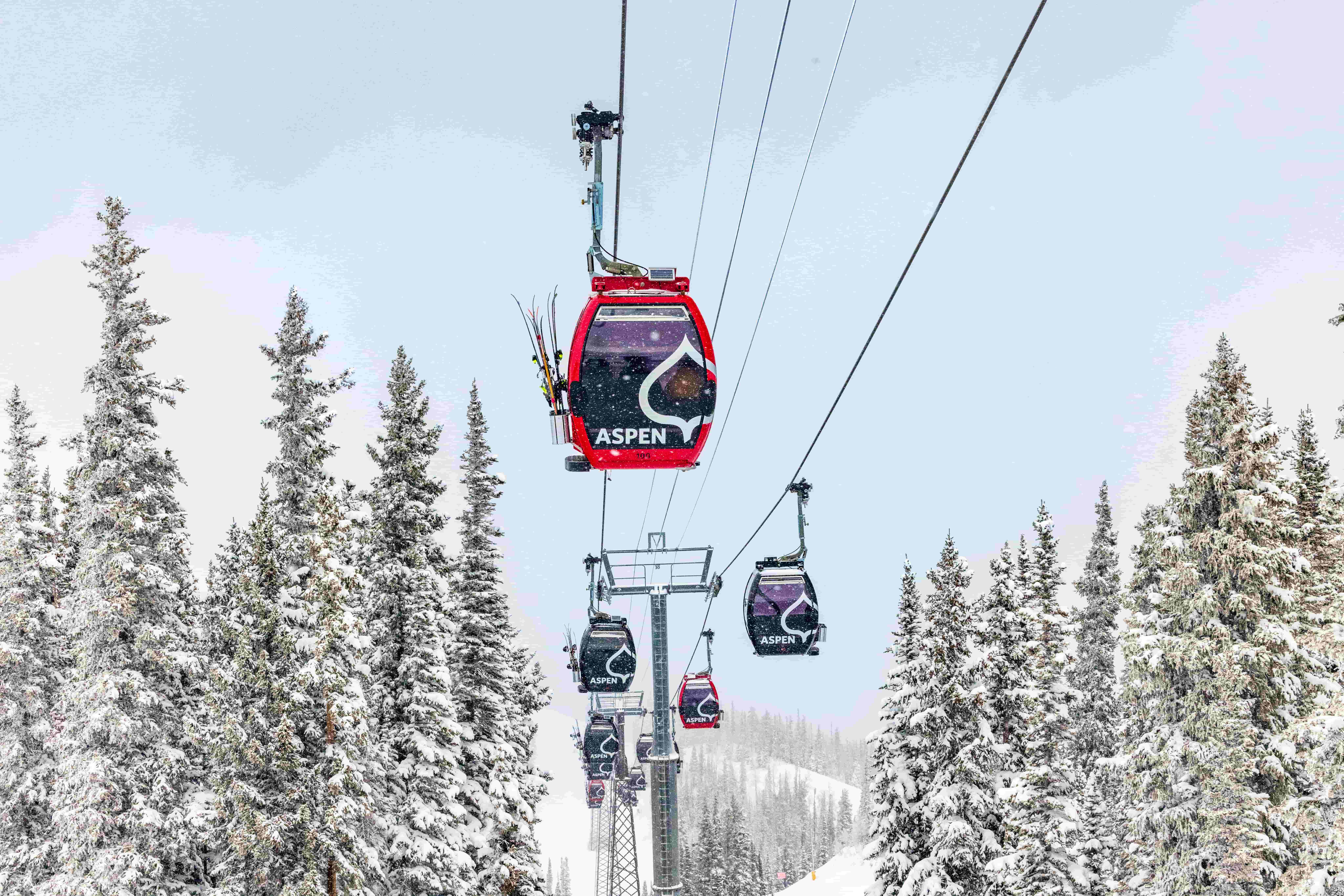
Aspen Mountain Gondolas. Courtesy of Aspen One.
Setting Examples in Sustainable Skiing
Equally so are the pioneering initiatives at Taos Ski Valley in northern New Mexico, whose challenging slopes and eco-accolades draw hard-chargers and environmentally minded skiers in equal measure. Enjoying a spectacular setting in the Sangre de Cristo Mountains and framed by the 12,481-foot Kachina Peak, whose steep chutes and back bowls provide some of North America’s most extreme inbound terrain, its unique blend of Native American, Spanish, and Mexican influences also add to the allure.
Independently owned (although it’s on the Ikon Pass), Taos made headlines as the world’s first (and still only) certified B-Corp ski resort in 2017 and first ski area in the country to become certified carbon neutral two years ago. Even its Gold LEED-certified alpine-style hotel, The Blake, is partially powered by geothermal wells within the slopes, making the resort’s aim to achieve net zero by 2030 entirely plausible.
“We know the ski industry faces real threats due to climate change,” says Dawn Boulware, vice president of environmental and social responsibility at Taos, who adds that their award-winning conservation efforts include a growing EV and hybrid fleet (a fully electric snowcat debuted last season). Operations, including chairlifts and energy-intensive snowmaking, also run entirely on renewable daytime solar power.
Like Sundance, Taos has retained its small-town, independent spirit while a shared commitment to conservation has cemented its position as a sustainable ski resort development leader. As skiers increasingly seek responsibly-run destinations and resorts, Robert Redford’s vision of a place “where people come to connect with nature and themselves” feels more relevant than ever. With resorts like Sundance, Aspen Snowmass, and Taos leading the charge in redefining the future of winter, there’s hope the magic of the mountains will remain not just as memories but the promise for generations to come.

Keri Bridgwater is a freelance writer based in San Diego whose bylines include BBC Travel, Fodor’s, Condé Nast Traveler, Forbes Vetted, SFGATE, Yoga Journal and Organic Spa Magazine. Reported travel stories with a focus on wildlife conservation, outdoor adventure, and wellbeing are of particular interest. She has swum with sharks in Hawaii, hiked Vietnam’s tallest mountain, flown in the back of a USAF trainer jet over Huntington Beach, and taken her Toyota 4Runner off-roading in Joshua Tree while on assignment. Follow her adventures on Instagram @keri.bridgwater
North Stars: Carbon Footprint, Heritage Value, Wildlife Ecosystems


